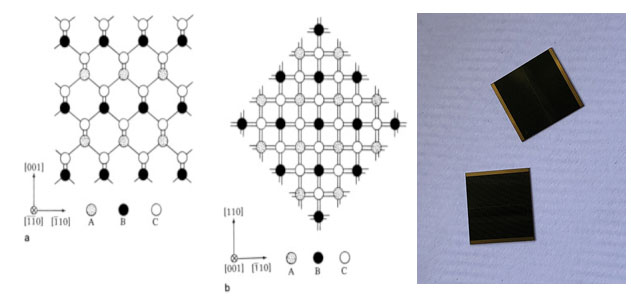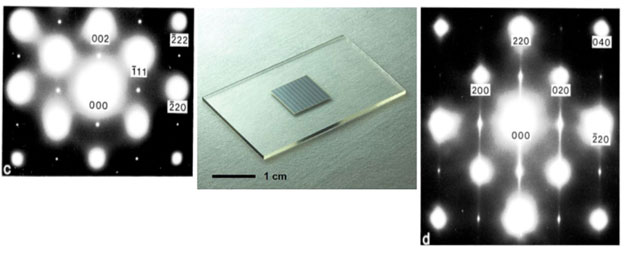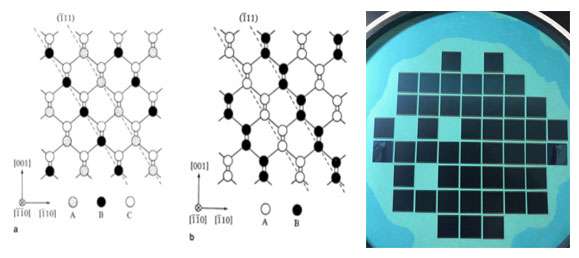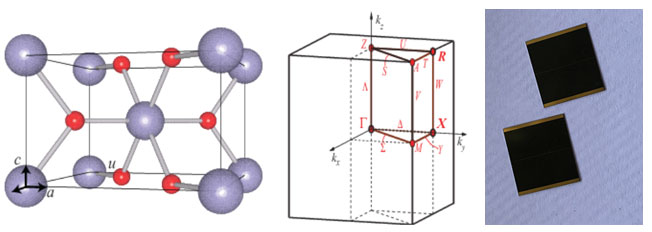The chalcopyrite structure in the tetragonal unit cell has a c-axis twice that of a (or b) axis. When observed , the structure is composed of double-layer superlattices.


If the structure is projected along the [010] direction or along the [100] direction, the double-layer superlattice configuration can be easily identified. Double layer superlattices will produce superstructure reflections at H + 1, K, L + 12 and h, K + 1, L + 12, where h, K and L are even or odd. The chalcopyrite structure can be divided into three variants, each of which is oriented along [001], [010] or [100] directions. Chalcopyrite structure is closely related to cuau-i structure. Every two successive layers of chalcopyrite structure along the tetragonal c-axis are equivalent to cuau-i structure. The first and second, second and third, third and fourth layers are equivalent to [100] variant, [010] variant, [100] variant,... Cuau-i structure, respectively. Chalcopyrite structure is common in ii-iv-v or I-III-VI alloys, but only recently has it been observed with cuau-i structure in equivalent III-V alloys. Fig is a diffraction pattern obtained from the gaas0.5sb0.5 layer grown by MOVPE, which contains a mixture of chalcopyrite and cuau-i structure. In this diffraction pattern, chalcopyrite reflects 0, 1 and 12; 0, 1¯, 12;... From [001] variant, while 0, 12, 1; 0, 12, 1¯;... From [010] variant. Additional reflections 0, 0, 1 and 0, 1, 0 come from two variants of cuau-i structure.

In the cupt type ordered structure, the preferred a and B sites in the sublattice are arranged as a single-layer superlattice along the (111) direction. There are four variants of this structure, each of which follows a certain direction of four equivalent (111) directions[ The arrangement of a and B loci in the variant is shown in FIG. Cupt type ordered structures can also appear in binary systems, such as gexsi1-x. In this case, cupt type ordering appears in two FCC sublattices, as shown in Fig. The (111) single-layer superlattice in cupt type ordered structure will cause superstructure reflection at H + 12, K + 12, L + 12 between two adjacent Bragg reflections h, K, l and H + 1, K + 1. Fig and 4D are diffraction patterns of two gaas0.5sb0.5 layers grown on different substrates by MBE at different temperatures. The strong superstructure reflections observed at H + 12, K - 12, L + 12 and H + 12, K + 12, L - 12 positions in Fig indicate that the layers grown at higher temperatures contain two highly ordered cupt variant structures. The superstructural reflection in Fig. obtained from layers grown at lower temperatures is weaker and more diffuse, indicating the existence of similar types of short-range ordering.
